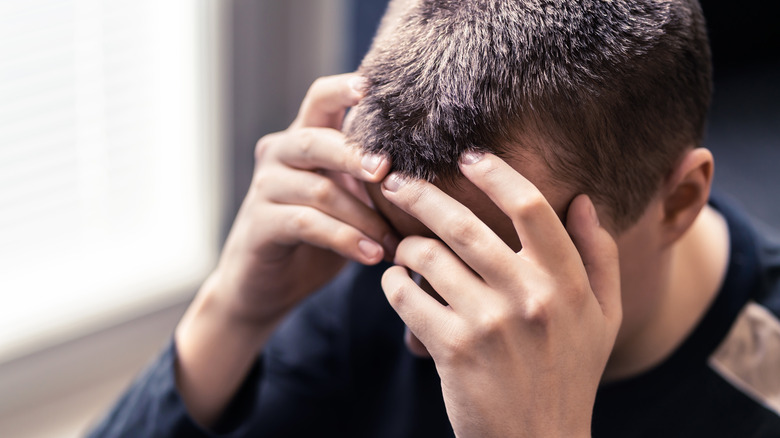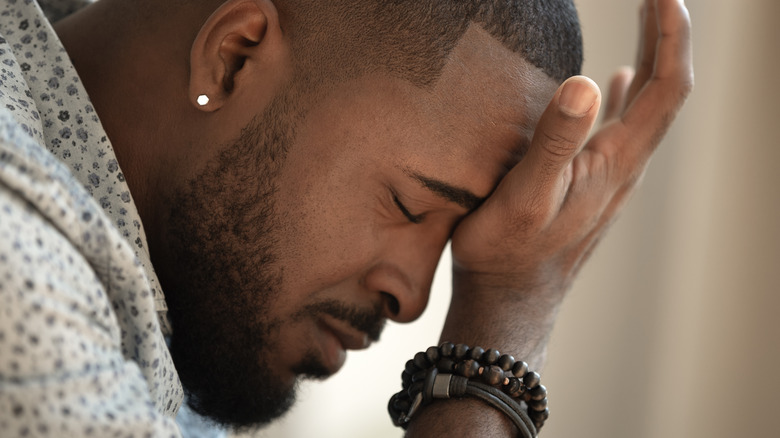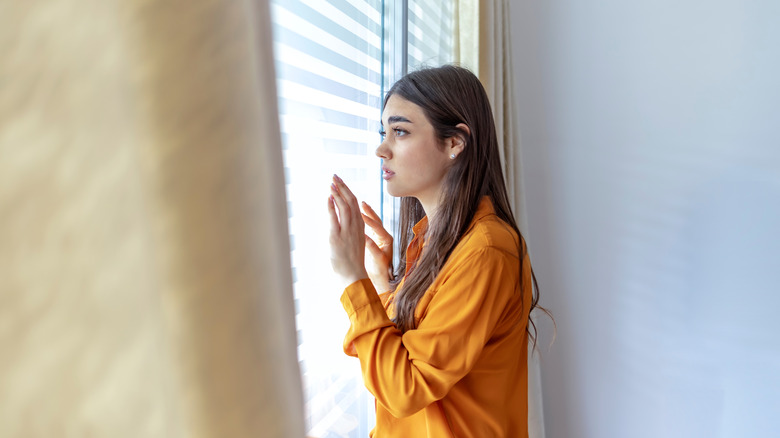How To Identify The Different Types Of Anxiety Disorders
Believe it or not, anxiety is your body's natural response to stress and fear. As a matter of fact, anxiety is what helps keep your body awake and alert in stressful or even dangerous situations. However, anxiety as a stress response is not quite the same as an anxiety disorder. According to Everyday Health, it is only when these feelings of anxiousness, unease, and nervousness become persistent and excessive that anxiety can be classified as a mental health disorder.
Anxiety disorders can trigger a physiological reaction in response to certain stressors. In addition to feelings of dread, apprehension, and irritability, it is not uncommon for people with anxiety disorders to experience nausea, tremors or twitches, frequent urination, and diarrhea. Other common symptoms include restlessness, obsessive thoughts, headaches, and insomnia. Unlike situational anxiety, anxiety disorders are chronic and are distressing enough to interfere with your every day life and daily activities.
What are the most common types of anxiety disorders?
Not every anxiety disorder is the same. In fact, there are many different types of anxiety disorders, many of which are accompanied by their own set of unique signs and symptoms. For example, one of the most common types of anxiety disorders is known as generalized anxiety disorder (GAD). According to Healthline, GAD is characterized by excessive worrying, especially about the future. In order to be diagnosed with GAD, however, this worrying needs to persist for at least 6 months and must occur during more days than not.
Another common type of anxiety disorder is called panic disorder — a condition characterized by sudden and recurring panic attacks. Symptoms of panic disorder include disassociation, feelings of impending doom, chest pain, shortness of breath, sweating, dizziness, and shaking.
Some people have phobias, which are irrational and overwhelming fears of certain objects, situations, or places. A common one is social phobia, also known as social anxiety disorder, which involves an overwhelming fear of social situations. It's not uncommon for people with social anxiety to avoid going out in public for fear of being embarrassed or humiliated, especially in certain settings, like work or school. In addition, people with social anxiety disorder tend to find it hard to talk to people or socialize in a big group setting.
Agoraphobia and separation anxiety
Another common phobia is agoraphobia, which can cause people to avoid going outside altogether. This often stems from the fear of having a panic attack in public, or the fear that something bad will happen in a public setting (via Healthline). As a result, people with agoraphobia avoid certain places and social situations, and some confine themselves to their homes.
Meanwhile, separation anxiety is a disorder characterized by extreme fear and distress from being separated from a loved one. Separation anxiety disorder is most common among young children, who often feel anxious and fearful when separated from their parents, but it can also occur in adults. Separation anxiety in adults often stems from a fear of something terrible happening to a loved one.
If you have any combination of these symptoms and think you might have an anxiety disorder, you should contact your doctor. They will help you obtain a diagnosis and proper treatment.



